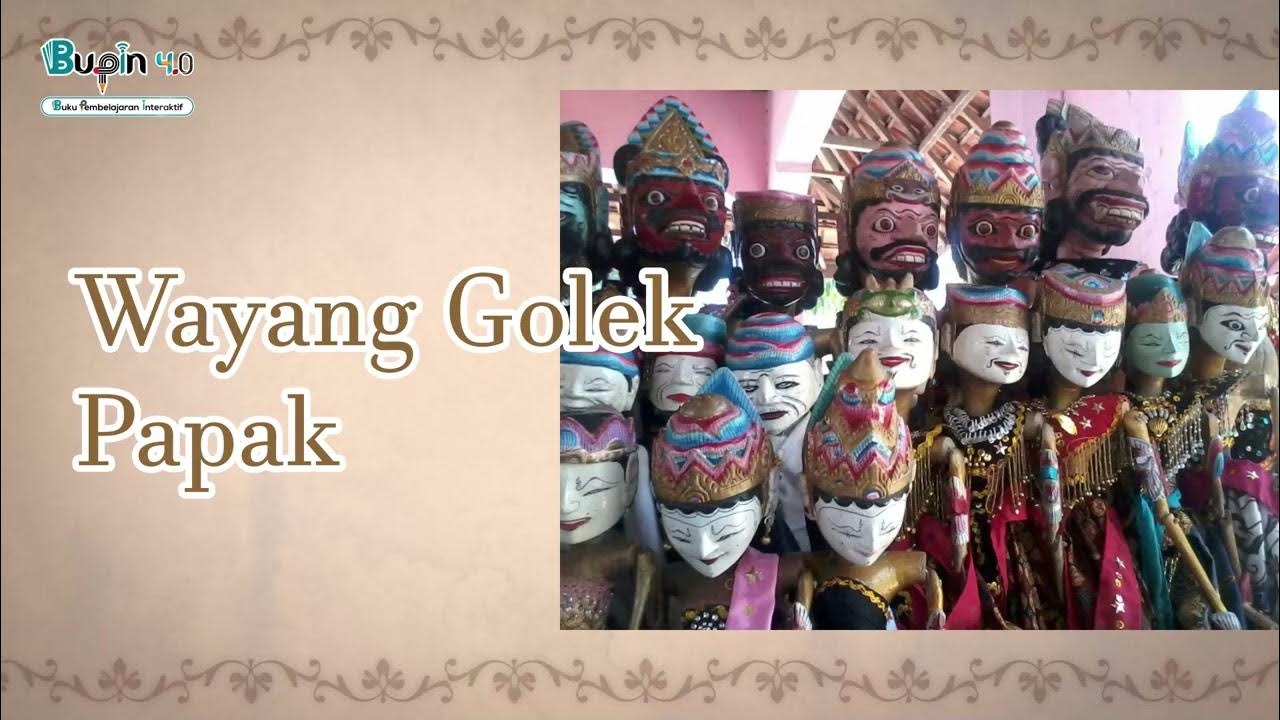Basa Sunda Kelas XII | Pangajaran 2 "carita wayang"
Summary
TLDRThis Sundanese lecture explores the cultural and historical roots of wayang performances, tracing their origins from India to Indonesia. It highlights the adaptation of the Ramayana and Mahabharata epics into wayang stories, emphasizing the distinct Sundanese interpretation. The script delves into various types of wayang, such as wayang golek, wayang kulit, and wayang wong, and contrasts the Indian and Sundanese versions, focusing on the unique roles and characters in each. The lecture also touches on the integration of Islamic teachings with traditional art, showcasing how wayang has evolved over time in the Sundanese culture.
Takeaways
- 😀 Wayang originated in India, with stories like the Ramayana and Mahabharata forming its foundation.
- 😀 Wayang theater was brought to Indonesia alongside the spread of Islam, acting as a medium for religious and cultural exchange.
- 😀 The name 'wayang' comes from the Indonesian word for 'shadow', representing the performances' shadow-play style.
- 😀 The traditional wayang performance is rooted in storytelling through puppetry, gamelan music, and shadow projections.
- 😀 Wayang has evolved over time, with various types emerging such as wayang kulit (shadow puppetry), wayang golek (rod puppets), and wayang wong (human puppets).
- 😀 The Sundanese people adapted the wayang stories to fit their culture, resulting in unique local versions, such as wayang golek.
- 😀 The characters in Sundanese wayang often differ from their Indian counterparts, such as the Punakawan figures Semar, Cepot, and Gareng, who have specific roles in the stories.
- 😀 In Sundanese wayang, the Pandawa and Kurawa are central figures, representing good and evil, respectively.
- 😀 Key figures in both Indian and Sundanese wayang include heroes like Arjuna, Gatotkaca, and Pandawa, and villains like Ravana and Kurawa.
- 😀 The wayang plays are designed not only for entertainment but also to convey moral and spiritual lessons, often in line with Islamic teachings.
Q & A
What is the origin of wayang performance in Sundanese culture?
-Wayang performance in Sundanese culture originates from India, specifically from the epics Ramayana and Mahabharata. The tradition was brought to Indonesia alongside the introduction of religion, particularly Islam, which used wayang as a medium to spread the faith.
How did wayang first become a part of Sundanese culture?
-Wayang first entered Sundanese culture through verbal traditions and later became documented in ancient manuscripts and 'wawacan.' Initially, wayang was a method for spreading Islam, but it eventually adapted to local Sundanese practices and storytelling.
What is the role of the Punakawan figures in wayang performances?
-The Punakawan figures in wayang performances, such as Semar, Cepot, and Gareng, serve as comic relief and often represent commoners. These characters are significant in both the Indian and Sundanese traditions, though in Sundanese culture, they are seen as more connected to the themes of loyalty and wisdom.
How does the Sundanese version of wayang differ from the Indian version?
-While both versions of wayang share the same basic structure, the Sundanese version introduces unique cultural nuances. For example, characters like Semar, Cepot, and Gareng have different roles and symbolic meanings in Sundanese culture compared to their Indian counterparts. Additionally, wayang in Sunda often integrates local myths and stories that aren't found in the Indian texts.
What are the two major Indian epics that form the foundation of wayang stories?
-The two major Indian epics that form the foundation of wayang stories are the Ramayana and the Mahabharata. These stories have been adapted into various wayang performances, which differ in details and themes depending on the region, especially in Indonesia.
What is the significance of wayang performances in spreading Islam in Sundanese culture?
-Wayang performances in Sundanese culture were used as a medium for spreading Islam by integrating Islamic teachings into the traditional stories. The characters in wayang performances often conveyed moral lessons, and religious leaders used these performances to teach about Islam in a culturally relevant way.
What does the term 'wayang' actually mean in its original context?
-The term 'wayang' comes from the Indonesian and Javanese words for 'shadow' or 'silhouette.' It refers to the shadow puppetry used in traditional performances, where the puppets cast shadows on a screen to tell stories, often from epic tales like the Ramayana and Mahabharata.
How did wayang evolve over time in Indonesia?
-Wayang evolved in Indonesia from a form of oral storytelling to a fully-fledged performance art that included puppetry, music (gamelan), and narration. It diversified into several types such as wayang kulit (shadow puppets), wayang golek (rod puppets), and wayang wong (human puppetry).
What role do the characters like Gatotkaca play in Sundanese wayang performances?
-In Sundanese wayang performances, Gatotkaca plays an important role as a hero, often depicted as a brave warrior. Unlike in the Indian tradition, where his role is limited, Sundanese wayang elevates Gatotkaca as a significant figure with considerable powers and virtues, often seen as a protector of the state.
What is the cultural importance of wayang performances in contemporary Sundanese society?
-In contemporary Sundanese society, wayang performances continue to hold cultural significance, acting as a bridge between traditional values and modern identities. These performances help preserve Sundanese heritage, educate the younger generation about their history, and provide a platform for discussing contemporary issues through a traditional medium.
Outlines

Dieser Bereich ist nur für Premium-Benutzer verfügbar. Bitte führen Sie ein Upgrade durch, um auf diesen Abschnitt zuzugreifen.
Upgrade durchführenMindmap

Dieser Bereich ist nur für Premium-Benutzer verfügbar. Bitte führen Sie ein Upgrade durch, um auf diesen Abschnitt zuzugreifen.
Upgrade durchführenKeywords

Dieser Bereich ist nur für Premium-Benutzer verfügbar. Bitte führen Sie ein Upgrade durch, um auf diesen Abschnitt zuzugreifen.
Upgrade durchführenHighlights

Dieser Bereich ist nur für Premium-Benutzer verfügbar. Bitte führen Sie ein Upgrade durch, um auf diesen Abschnitt zuzugreifen.
Upgrade durchführenTranscripts

Dieser Bereich ist nur für Premium-Benutzer verfügbar. Bitte führen Sie ein Upgrade durch, um auf diesen Abschnitt zuzugreifen.
Upgrade durchführenWeitere ähnliche Videos ansehen
5.0 / 5 (0 votes)






